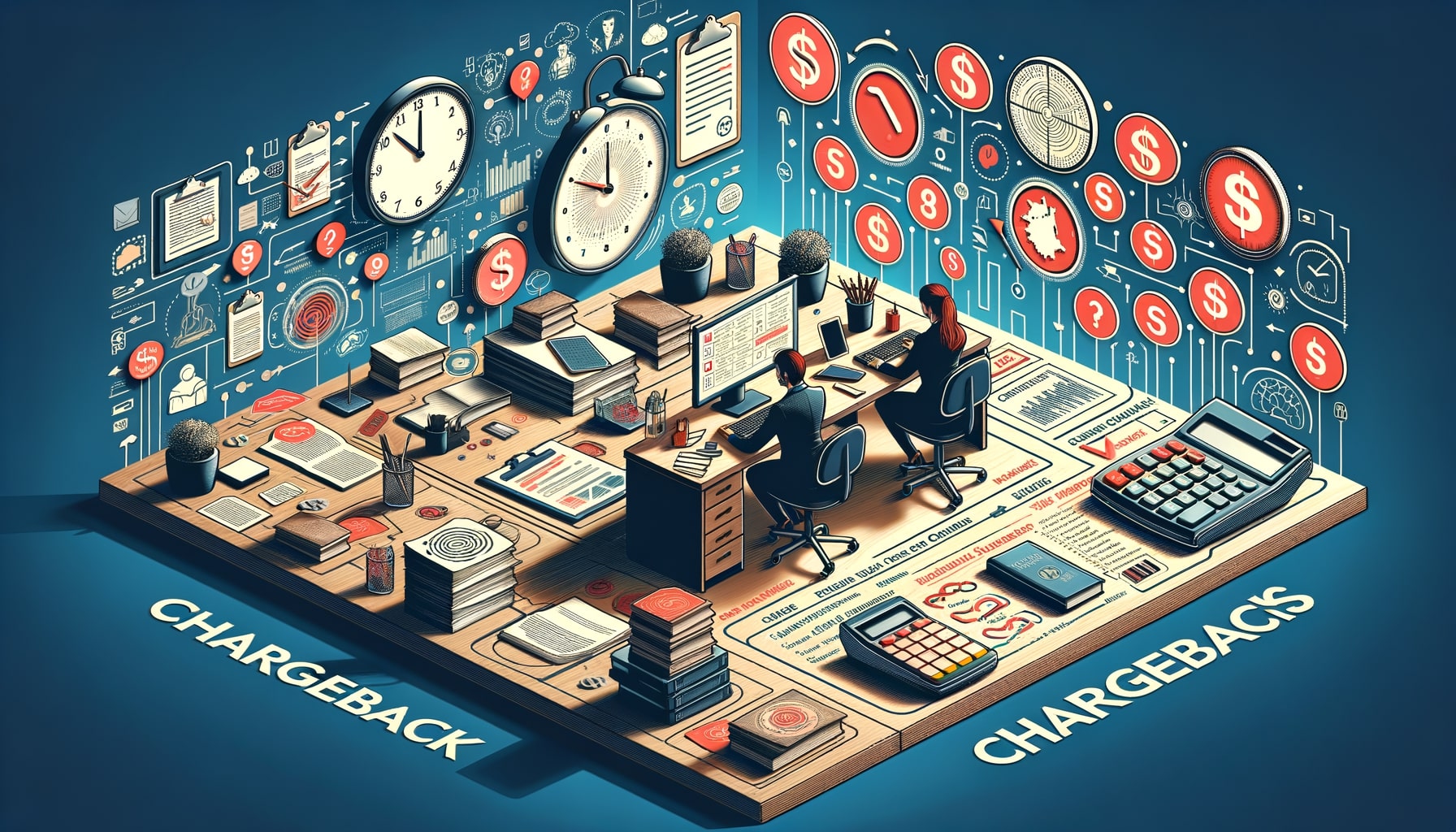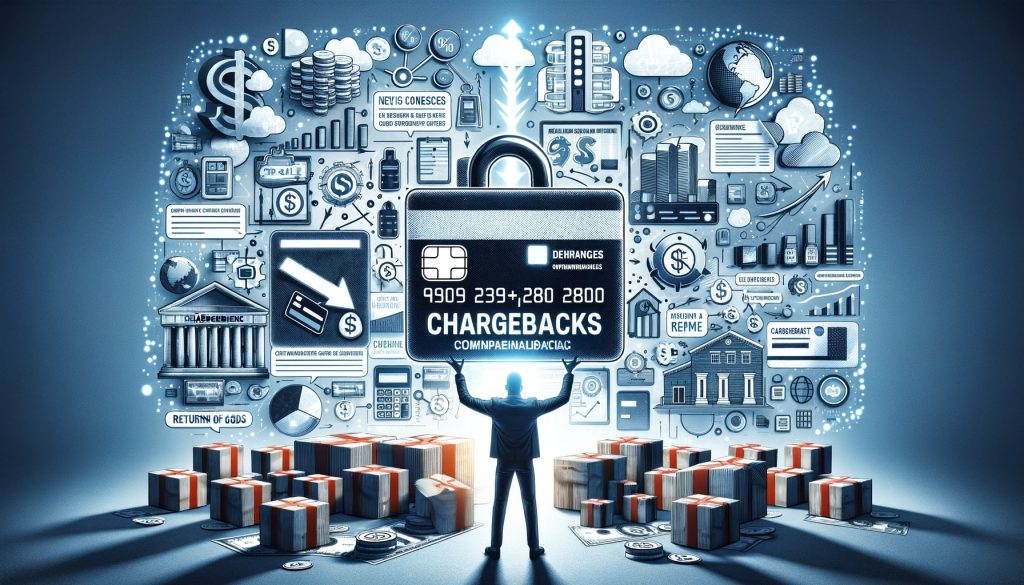
By Manoj Bhatt October 16, 2024
Chargebacks are a common occurrence in the world of business, and they can have a significant impact on a company’s bottom line. Understanding what chargebacks are and how they affect businesses is crucial for any entrepreneur or business owner. In this article, we will delve into the various strategies and best practices that can help reduce chargebacks and minimize their impact on your business.
A chargeback occurs when a customer disputes a transaction and requests a refund from their bank or credit card company. Chargebacks can be initiated for various reasons, including fraud, dissatisfaction with the product or service, or unauthorized transactions. When a chargeback is filed, the merchant is required to provide evidence to prove that the transaction was legitimate and that the customer received the product or service as promised.
The impact of chargebacks on businesses can be significant. Not only do chargebacks result in financial losses due to the refund and associated fees, but they can also damage a company’s reputation and credibility. High chargeback rates can lead to increased processing fees, loss of merchant accounts, and even legal consequences. Therefore, it is essential for businesses to implement strategies to reduce chargebacks and protect their interests.
What is a Chargeback?

A chargeback occurs when a cardholder disputes a transaction and asks their bank to reverse the charge. The cardholder may believe the transaction was unauthorized, fraudulent, or incorrect. While chargebacks offer a form of protection to consumers, they also come with financial and reputational risks for merchants.
Chargebacks are meant to serve as a consumer safeguard against fraudulent or disputed transactions. However, when chargebacks are not managed properly, they can become a costly issue for businesses, especially those with high transaction volumes.
The Chargeback Process
The chargeback process typically unfolds as follows:
- Cardholder Dispute: A cardholder contacts their issuing bank to dispute a charge on their account, claiming that the transaction was unauthorized, they didn’t receive the product, or another reason.
- Investigation by Issuing Bank: The issuing bank will investigate the claim and may request documentation from the merchant to validate the charge.
- Temporary Refund to Cardholder: In many cases, the cardholder receives a temporary credit while the investigation is ongoing.
- Chargeback Submission: If the bank deems the cardholder’s dispute valid, the chargeback is initiated, and the merchant is notified. The transaction amount is deducted from the merchant’s account, and the chargeback process begins.
- Merchant Response: The merchant has a window of time to respond with evidence to contest the chargeback.
- Final Resolution: Based on the evidence provided, the chargeback is either upheld, and the transaction is reversed, or the charge is returned to the merchant.
Common Reasons for Chargebacks
Chargebacks occur for a variety of reasons, and understanding the most common causes can help businesses identify preventive strategies. The primary reasons include:
- Fraudulent Transactions: Unauthorized transactions due to credit card theft or hacking.
- Non-Receipt of Goods: The customer claims they did not receive the goods or services they purchased.
- Product Not as Described: The product did not match the customer’s expectations or the description provided during the sale.
- Technical Issues: Double billing or incorrect charge amounts resulting from technical errors during the transaction.
- Customer Confusion: The customer may not recognize the charge on their billing statement due to unclear transaction descriptors.
Impact of Chargebacks on Your Business

Chargebacks can severely affect a business, both financially and operationally. Some of the most significant impacts include:
1. Financial Losses
When a chargeback occurs, the merchant not only loses the sale but also incurs additional costs, including:
- Lost Revenue: The sale is reversed, resulting in a loss of revenue.
- Chargeback Fees: Payment processors charge a fee for each chargeback, which can range from $15 to $100.
- Increased Processing Costs: A high chargeback ratio can lead to higher transaction fees from payment processors.
- Higher Risk Profile: Excessive chargebacks can lead to a business being classified as “high risk,” which can further increase processing costs.
2. Damage to Reputation
Frequent chargebacks can damage a business’s reputation with customers and payment processors. A high chargeback rate may signal poor service, fraud, or fulfillment issues, leading to decreased customer trust and payment provider scrutiny.
3. Risk of Merchant Account Termination
If a business’s chargeback rate exceeds acceptable thresholds, payment processors may terminate the merchant’s account, effectively preventing the business from accepting credit card payments.
Steps to Reduce Chargebacks
To effectively reduce chargebacks, businesses must take a proactive approach by implementing preventive measures and addressing the root causes of disputes. Here’s how you can do that:
The Importance of Accurate Product Descriptions and Clear Policies
One of the primary reasons customers file chargebacks is due to discrepancies between the product or service they received and what was described or promised. To minimize the risk of chargebacks, it is crucial for businesses to provide accurate and detailed product descriptions. This includes providing clear information about the features, specifications, and limitations of the product or service.
Additionally, businesses should have clear and transparent policies regarding returns, refunds, and cancellations. These policies should be easily accessible to customers and clearly communicated during the purchasing process. By setting clear expectations and providing accurate information, businesses can reduce the likelihood of customers filing chargebacks due to misunderstandings or dissatisfaction.
Implementing Robust Fraud Detection and Prevention Measures
Fraudulent transactions are a significant concern for businesses, as they can result in chargebacks and financial losses. Implementing robust fraud detection and prevention measures is crucial to minimize the risk of fraudulent transactions and chargebacks.
One effective strategy is to use advanced fraud detection tools and technologies. These tools analyze various data points, such as IP address, transaction history, and customer behavior patterns, to identify potential fraudulent transactions. By flagging suspicious transactions for manual review or automatically declining them, businesses can reduce the risk of chargebacks resulting from fraudulent activity.
Enhancing Customer Service and Communication Channels
Effective customer service and communication channels play a vital role in reducing chargebacks. When customers have a positive experience and feel heard and valued, they are less likely to resort to filing chargebacks.
Businesses should strive to provide prompt and helpful customer support. This includes responding to inquiries and complaints in a timely manner, addressing customer concerns, and offering solutions to resolve any issues. By being proactive and attentive to customer needs, businesses can prevent chargebacks resulting from dissatisfaction or miscommunication.
Streamlining the Order Fulfillment Process to Minimize Errors
Errors in the order fulfillment process can lead to customer dissatisfaction and, subsequently, chargebacks. To minimize the risk of errors, businesses should streamline their order fulfillment process and implement quality control measures.
This includes ensuring accurate inventory management, efficient order processing, and reliable shipping and delivery services. By minimizing errors and delays in the order fulfillment process, businesses can reduce the likelihood of customers filing chargebacks due to late or incorrect deliveries.
Utilizing Secure Payment Gateways and Encryption Technologies
Securing payment transactions is crucial for businesses to protect themselves and their customers from fraudulent activities. Utilizing secure payment gateways and encryption technologies can significantly reduce the risk of unauthorized transactions and chargebacks.
Secure payment gateways encrypt sensitive customer information, such as credit card details, during the transaction process. This ensures that the information is securely transmitted and reduces the risk of it falling into the wrong hands. By using reputable payment gateways and encryption technologies, businesses can provide a secure and trustworthy payment experience for their customers, minimizing the risk of chargebacks resulting from unauthorized transactions.
Effective Dispute Resolution and Mediation Strategies
Despite implementing various preventive measures, chargebacks may still occur. In such cases, having effective dispute resolution and mediation strategies in place is crucial to minimize the impact on businesses.
Businesses should have clear procedures for handling chargeback disputes. This includes promptly gathering and providing evidence to support their case, such as order details, shipping information, and customer communication records. By presenting compelling evidence and effectively communicating with the customer’s bank or credit card company, businesses can increase their chances of successfully disputing chargebacks.
Monitoring and Analyzing Chargeback Data for Insights and Trends
Monitoring and analyzing chargeback data can provide valuable insights and help businesses identify trends and patterns. By understanding the root causes of chargebacks, businesses can implement targeted strategies to reduce their occurrence.
Businesses should regularly review chargeback data, including reasons for chargebacks, product categories with high chargeback rates, and customer behavior patterns. This analysis can help identify areas for improvement, such as product quality, customer service, or fraud prevention measures. By proactively addressing these issues, businesses can reduce chargebacks and improve overall customer satisfaction.
Proactive Measures to Prevent Friendly Fraud and Unauthorized Transactions
Friendly fraud, also known as chargeback fraud, occurs when a customer intentionally files a chargeback while retaining the product or service they received. This type of fraud can be challenging to prevent, but businesses can take proactive measures to minimize its occurrence.
One effective strategy is to implement a robust customer authentication process. This can include requiring customers to provide additional verification, such as a one-time password or biometric authentication, for high-value transactions. By implementing strong customer authentication measures, businesses can reduce the risk of unauthorized transactions and friendly fraud.
Implementing a Chargeback Management Plan

Developing a chargeback management plan is essential to keeping your business in good standing with payment processors and protecting your revenue. The following steps can help you create an effective plan:
Step 1: Establish Chargeback Monitoring
Create a system for regularly monitoring chargebacks, tracking dispute reasons, and identifying trends. This will help you focus on specific areas where chargebacks are occurring most frequently.
Step 2: Assign a Chargeback Team
Appoint a team or individual responsible for managing chargebacks, responding to disputes, and tracking resolution outcomes. This helps ensure that chargeback disputes are handled efficiently.
Step 3: Implement Preventive Measures
Based on your chargeback data, implement preventive measures tailored to address the most common causes. For example, if shipping issues are leading to chargebacks, invest in better logistics solutions or delivery tracking tools.
Step 4: Regularly Train Employees
Ensure your employees, particularly those in customer service, are trained in chargeback prevention techniques, such as providing top-tier service, handling disputes effectively, and communicating policies clearly.
Step 5: Review and Adjust
As your business evolves, regularly review your chargeback management plan and adjust your strategies accordingly. Customer expectations and fraud tactics change, so staying proactive is key to maintaining low chargeback rates.
FAQs
Q1: What is a chargeback?
A chargeback is a reversal of a credit card transaction initiated by the cardholder through their issuing bank. It allows the cardholder to dispute a transaction and request their money back if they believe the transaction was fraudulent, unauthorized, or unsatisfactory.
Q2: How do I prevent chargebacks from fraud?
To prevent fraud-related chargebacks, implement security measures such as Address Verification Service (AVS), Card Verification Value (CVV) checks, and invest in advanced fraud detection tools. Monitoring suspicious transaction patterns and using secure payment gateways are also essential strategies.
Q3: What is a chargeback ratio?
A chargeback ratio is the percentage of chargebacks a merchant receives in relation to their total transactions. Payment processors monitor chargeback ratios, and a high ratio can result in penalties or the termination of a merchant account.
Q4: How can I dispute a chargeback?
Merchants can dispute chargebacks by submitting evidence, such as receipts, transaction records, delivery confirmations, or customer communications, to their acquiring bank. It’s important to respond promptly and provide all necessary documentation to support the legitimacy of the transaction.
Q5: What are the fees associated with chargebacks?
Chargeback fees can range from $15 to $100, depending on the payment processor. In addition to losing the revenue from the transaction, merchants must also pay these fees for each chargeback dispute.
Q6: Can chargebacks be reversed?
Yes, chargebacks can be reversed if the merchant successfully provides sufficient evidence proving that the transaction was legitimate. However, the final decision lies with the issuing bank, and not all disputes are resolved in the merchant’s favor.
Q7: How does a high chargeback ratio affect my business?
A high chargeback ratio can lead to increased transaction fees, damaged relationships with payment processors, and potentially the termination of the merchant’s account. It can also harm a business’s reputation.
Q8: What are the most common reasons for chargebacks?
The most common reasons for chargebacks include fraudulent transactions, customer dissatisfaction with the product or service, non-receipt of goods, unclear billing descriptors, and technical transaction errors.
Conclusion
Chargebacks can have a significant impact on businesses, both financially and reputationally. However, by implementing the strategies and best practices outlined in this article, businesses can reduce chargebacks and protect their interests.
Accurate product descriptions and clear policies help set clear expectations and minimize misunderstandings. Robust fraud detection and prevention measures help identify and prevent fraudulent transactions. Effective customer service and communication channels foster positive customer experiences and reduce the likelihood of chargebacks. Streamlining the order fulfillment process minimizes errors and delays.
Utilizing secure payment gateways and encryption technologies protects against unauthorized transactions. Effective dispute resolution and mediation strategies help minimize the impact of chargebacks. Monitoring and analyzing chargeback data provide insights for improvement. Proactive measures to prevent friendly fraud and unauthorized transactions further protect businesses.
By implementing these strategies and continuously evaluating and improving their processes, businesses can reduce chargebacks, protect their bottom line, and enhance customer satisfaction.
